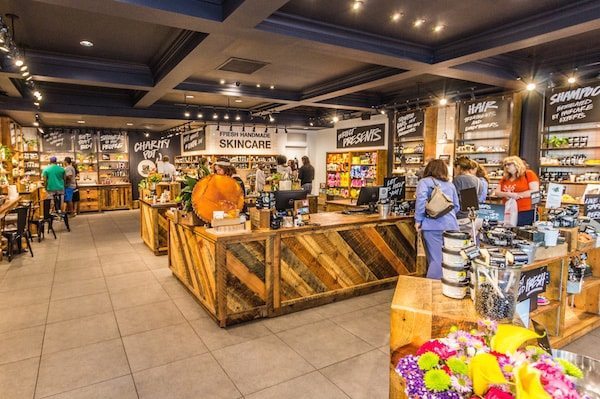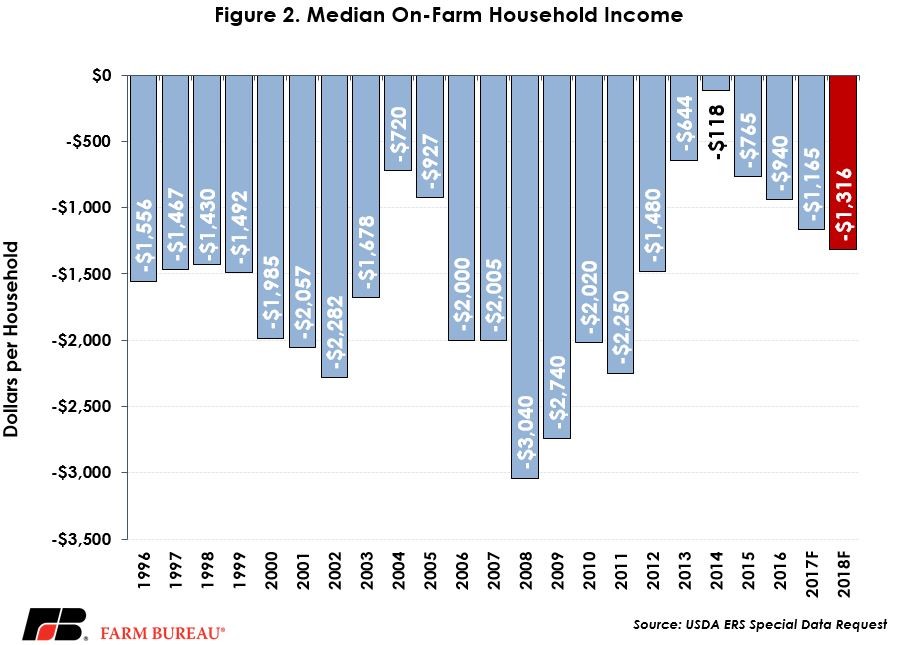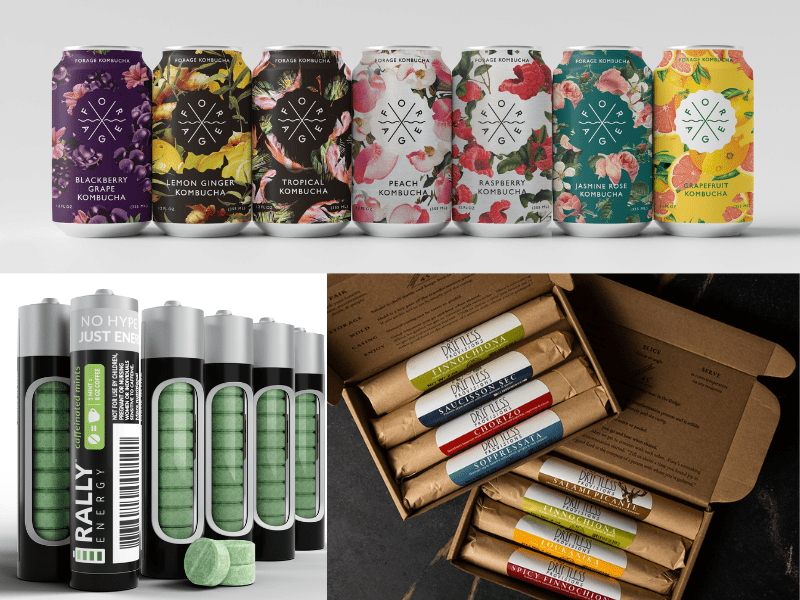[vc_row][vc_column][vc_column_text]Agriculture is a tough business to be in. According to an analysis by the Farm Bureau, median on-farm household income has been negative for the past 20 years. This means that every year for the past 20 years, more than ½ of all farms in the United States were unprofitable! Many of these farms have kept their cash flow positive by increasing their debt load, and individual farms might be profitable one year and unprofitable the next. These numbers underscore a challenge to farmers looking to achieve profitable operations or transition their farm to the next generation.
There are a lot of explanations for this level of unprofitability in the agriculture sector, and given the sheer size and nature of the farm economy, multiple things in our current economic and political environment would need to change to reverse this trend. That being said, we have talked before in this newsletter about how brand building can help farmers sell products that resonate with consumers while earning a premium, which could help with farm profitability. And, we are excited about the momentum and possibilities of branded products that support regenerative agriculture practices being paid for by consumers demanding long-term solutions to the problems of our agricultural system. However, for commodity agriculture producers used to wholesaling to a few large customers, shifting from that business model to having a relationship with consumers via a branded product is a big leap.
On our podcast this week, we talked with William J. Kitsch, Vice President and Agricultural Lending Manager with Ephrata National Bank in Lancaster County, Pennsylvania. Farmland in Lancaster County sells for $25,000 per acre, making commodity agriculture difficult to work financially due to the low return on assets, especially when trying to transition the farm. In those situations, he advocates for changing the price the farmers receive via new business models or premium offerings through things like organic production or value-added processing (ex. cheese making), so long as the concept is proven through demonstrated consumer demand. But, there is a lack of technical assistance nationally to help more lenders understand (and underwrite) these cross-disciplinary business models (ex. a farming operation with a cheese plant that resembles food manufacturing).
The problems facing farmers and the ecosystem that supports them are complicated and large. Finding new business models that allow farmers to be profitable while meeting changing consumer demand will require high-quality technical assistance and coordinated effort on the part of farmers, brand-builders, lenders, investors and consumers. With the right assistance and coordination, hopefully farmers can take advantage of the business model opportunities available to them and reverse these troubling trends.
And now, our roundup of the best food and beverage finance news, events and resources from around the web…
Business Model Insights
- Retail Distribution is Broken (The Intertwine Group) – “Source dependent, since the start of this decade, somewhere between 18 and 22 billion dollars of market share has transferred from the largest food companies to the emerging food brands. That transfer has had a major impact on distributors as more and more of their inventory is comprised of products from small companies from whom they only buy a little. This limits the ability to aggregate shipments and leverage buying power. At the same time, this market share transfer has taken place, there has been continued and significant consolidation of retailers. These larger entities have used their buying power to negotiate favorable terms from their primary distributor. Most operate under a cost-plus relationship. The challenge is that as those cost-plus percentages have been driven down by industry consolidation, the cost to serve for the distributor has continued to increase.”
- Will high trucking costs eventually run over food companies’ ability to grow? (FoodDive)
- Bioceres CEO: Business Model Innovation is Key for Conservative Ag Industry (AgFunder News)

Raising Capital
- What is the Difference Between a Secured and Unsecured Loan? (Ephrata National Bank) – “When shopping for a loan, you will notice that loans typically fall into two categories, secured and unsecured. Your borrowing need and financial circumstances will ultimately determine which type is the best fit for you, but it’s also important to understand the basic characteristics of the each loan. Secured loans are always guaranteed by some type of collateral. Mortgages, home equity loans and lines of credit and car loans are some of the most common types of secure loans. Unsecured loans are loans that are not secured by collateral. Credit cards, personal loans and personal lines of credit are the most widely offered unsecured loans.”
- How do I connect with financial partners who will invest in my long-term mission? (New Hope Media)
- Founders, They Invest In You! (The Intertwine Group)
CPG/National Brands
- CPG brands face increasing competition for market share from restaurants, meal kits (Food Navigator) – “A whopping 85% of consumers don’t know what they will have for dinner until mere hours before the meal – meaning what ends up on their plates increasingly doesn’t come from the fridge, but rather from a restaurant, meal kit or the grocery deli and chilled section. This shift in how consumers find their way to dinner signals changes in how brands should relate to them.”
- How important is it to invest in packaging and where do I start? (New Hope Media)
- Food brands stuck in the middle face challenges (Meat + Poultry)

Market Trends
- Quick-to-prepare foods dominate categories across the store (New Hope Media) – “Convenience is arguably the most impactful trend in the food industry. Research shows that consumers have less time to cook, more food manufacturers are formulating products designed to be prepared quickly (we’re talking 30 seconds to 2 minutes) and, the largest indicator, grab-and-go sections of both conventional and natural retail stores are exploding. Many retailers are expanding their grab-and-go offerings, such as adding new open and refrigerated cases that allow easy access to fresh beverages, take-along prepared foods and mini-meals like yogurt, overnight oats and ready-to-drink soup.”
- Striking a balance between pricing and provenance (FoodDive)
- Consumers look beyond ingredients when deciding what product to buy (FoodDive)
Farming and AgTech
- Land Values and Cash Rents Are Higher in 2018 (Farm Bureau) – “The total value of agricultural land, including buildings, was $2.7 trillion in 2018, up $59 billion, or 2 percent, from prior-year levels. Overall, average agricultural land values increased an average of 1.9 percent, up $60 per acre to $3,140 per acre. With the 2017 inflation rate running 2.1 percent, this would suggest the real price of agricultural land was unchanged for the year. With agricultural land values rising in 2018, an increase in cash rents was not unanticipated. The national average rate moved from $136 per acre in 2017 to $138 per acre in 2018, again about the same rate as inflation.”
- Changes In Dairy Industry Spur Farmers To Pursue Novel Business Strategies (Wiscontext)
- Agtech Investment and the Future of Food (AllAboutAlpha.com)

Deals/M&A
- UNFI to acquire Supervalu, expanding product selection and customers (New Hope Media) – “United Natural Foods Inc., a leading distributer of natural foods, will acquire Supervalu, a competing distributor that also owns and operates retail stores, by the end of the calendar year. The acquisition will expand UNFI’s customer base and open channels in which UNFI is under-represented, the company reported in a released statement. UNFI also will diversify its product offerings—adding meat and produce, for example, as well as private-label frozen foods and deli items— as a result of the move.”
- PepsiCo Is Creating a New Unit to Develop Smaller Brands (Fortune)
- Nutrition Capital Network News – August 14, 2018 (NCN)
Industry Events
- FaBsafe Certificate (FaB Wisconsin) – $, 8/30 in Milwaukee, WI
- FaB Innovation Café (FaB Wisconsin) – $, 9/20 in Milwaukee, WI
- Expo East (New Hope Media) – $, 9/12 – 9/15 in Baltimore, MD
- Good Food Accelerator Application (FamilyFarmed) – Free, 9/13, Online (Accelerator in Chicago, IL)
- Ag Tech Day (Wisconsin Golden Angels) – $, 10/2 in Johnson Creek, WI
- Food Ag Ideas Week (Grow North MN) – $, 10/8 – 10/12 in the Twin Cities, MN (Multiple Venues)
- The Nick Kitchen Summit (Food Corridor) – $, 10/10 in Falcon Heights, MN
- Food Bytes! New York Pitch Competition (Food Bytes!) – $, 10/18 in New York, NY
- ACT Growth and Innovation Summit (Hartman Group) – $, 10/10 in San Diego, CA
- Esca Bona (New Hope Media) – $, 10/22 – 10/23 in Austin, TX
- Winter Nosh Live (Project Nosh) – $, 11/29 – 11/30 in Santa Monica, CA
[/vc_column_text][/vc_column][/vc_row]





